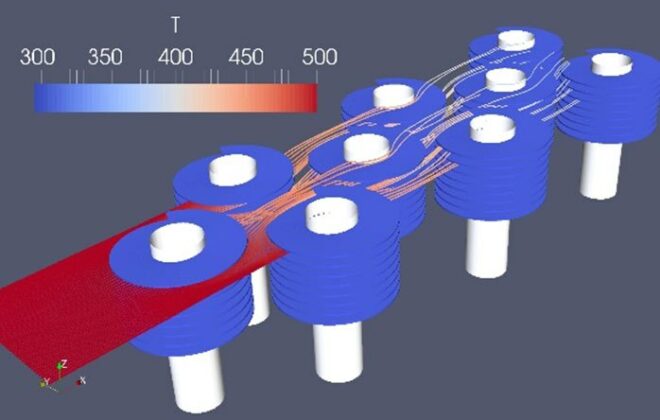What is Phosphorus and why should we care?
Let me take you back to high school chemistry. Do you remember this?

It probably brings back bad memories of crushed dreams upon the realization that chemistry wasn’t about making goo and blowing stuff up and was instead about balancing impossible equations, terrifying exams and dull lab experiments.
Now back to phosphorus [let’s just call it P from here on out], it turns out that P is one of the elements on that table and the star of our show!

Now, while all of the elements here are special in their own way, P is particularly important. Why, you might ask?
Because all life depends on it.
Okay, before we get overly dramatic, let me give you some background information.
P is a macronutrient that is essential for cell production in plants and animals. Without getting into nitty-gritty biochemistry, we can say that P is a key component of molecules that allow for cell energy storage, such as DNA.1
When there is a lack of P, cell development can’t occur. In other words, without P, you cannot have life. This is particularly important for food production and farming.
Access to P = Access to food.
Which leads me to….
Where do we find P and what’s the problem?
P deposits are found naturally in soils, aquatic sediments [rivers, oceans, etc.] and mineral rocks. Historically, farmers used “secondary forms” or “already-used” forms of P such as guano [bat poo], manure [animal poo], human excreta [human poo] and harvest residues to meet their P needs. However, at some point in the 20th century, farmers realized that food production couldn’t keep up with the growing population.2 They needed more P to increase crop yields and feed a larger population. This is when mineral rock P became popular.
To make a long story short, access to rock P was a good thing. Soils that had been over-used and P depleted were restored. Food was produced and people were fed. Despite rapid population growth, the number of starving people actually declined.
Unfortunately, like all miracle fixes, there’s always a catch.

It turns out this perceived unlimited resource that we have effectively become addicted to for feeding our population, is, like all things on earth, limited. Furthermore, our farming practices haven’t been all that genius. Because we thought it was unlimited, we essentially went wild, using the principle “more=better.” We apply P far in excess of our needs and waste tons.2The extras wash into water bodies, never to be used in farming again.
To make the story even grimmer, extra P in certain water bodies (lakes, rivers, coastal areas) causes major environmental problems. Here’s the gist: P in water bodies stimulates algal growth. Therefore, more P = more algae […of course, this also depends on a whole bunch of other factors that we won’t get into] and if you have way too much P, you’ll also have way too much algae. The catch is that oxygen is required for decomposing dead algae. Thus, if you then have too much algae, after they die, they’ll deplete the dissolved oxygen content of the water. Over time, this will cause oxygen depleted zones where no life can live.
This is an oxygen depleted lake [just for reference, the correct term for this process is ‘eutrophication’]:

Yup, everything’s dead…
Now, this has put us in a tricky situation because this causes two major problems:
- We are running out of P even though we are totally reliant on it for food production and…
- Extra P in water bodies causes ecological destruction
Time to get dramatic? Maybe. But there’s something we can do about it.
Next episode…How to produce food and feed people without running out of P and destroying the ocean.
[Update October 2015: Episode 2 is posted!]
Sources:
- Vance, C. P., Uhde-Stone, C., & Allan, D. L. (2003). Phosphorus acquisition and use: critical adaptations by plants for securing a nonrenewable resource. New Phytologist, 157(3), 423–447. doi:10.1046/j.1469-8137.2003.00695.
- Cordell, D., Drangert, J.-O., & White, S. (2009). The story of phosphorus: Global food security and food for thought. Global Environ Chang, 19, 292–305.
This blog post was first published on www.ntnutechzone.no on March 30th 2015

Helen Ann Hamilton
Helen Ann Hamilton is a PhD candidate at NTNU – The Department of Energy and Process Engineering.
Tags In
Search
Søk
Categories
- Arctic Research
- Arkitektur
- Bærekraft
- Bioingeniørfag
- Biologi
- Biology
- Biomedical Laboratory Science
- Biotechnology
- Bioteknologi
- Chemical Engineering
- Chemistry
- Climate
- Computer Science
- Datateknologi
- Digital
- Elektronikk
- Energi
- Energi
- Energy
- Engineering
- Engineering
- Environment
- Food Science
- Forskning
- Fysikk
- Fysikk
- Havbruk
- Informasjonsteknologi
- Informasjonsteknologi
- Ingeniørvitenskap
- Kjemi
- Kjemisk prosessteknologi
- Kjemisk prosessteknologi
- Kreftbehandling
- Kybernetikk
- Marine Technology
- Materialer
- Materials Science
- Materialteknologi
- Matvitenskap
- Meninger
- Miljø
- Min ph.d.
- My PhD
- My PhD
- My postdoc
- Nanotechnology
- Nanoteknologi
- Ocean
- Oil and gas
- Physics
- Research
- Simulering og visualisering
- Spør en forsker
- Studentliv
- Sustainability
- Ukategorisert
- Universitetsliv
- University Life
Kategorier
- Arctic Research
- Arkitektur
- Bærekraft
- Bioingeniørfag
- Biologi
- Biology
- Biomedical Laboratory Science
- Biotechnology
- Bioteknologi
- Chemical Engineering
- Chemistry
- Climate
- Computer Science
- Datateknologi
- Digital
- Elektronikk
- Energi
- Energi
- Energy
- Engineering
- Engineering
- Environment
- Food Science
- Forskning
- Fysikk
- Fysikk
- Havbruk
- Informasjonsteknologi
- Informasjonsteknologi
- Ingeniørvitenskap
- Kjemi
- Kjemisk prosessteknologi
- Kjemisk prosessteknologi
- Kreftbehandling
- Kybernetikk
- Marine Technology
- Materialer
- Materials Science
- Materialteknologi
- Matvitenskap
- Meninger
- Miljø
- Min ph.d.
- My PhD
- My PhD
- My postdoc
- Nanotechnology
- Nanoteknologi
- Ocean
- Oil and gas
- Physics
- Research
- Simulering og visualisering
- Spør en forsker
- Studentliv
- Sustainability
- Ukategorisert
- Universitetsliv
- University Life





